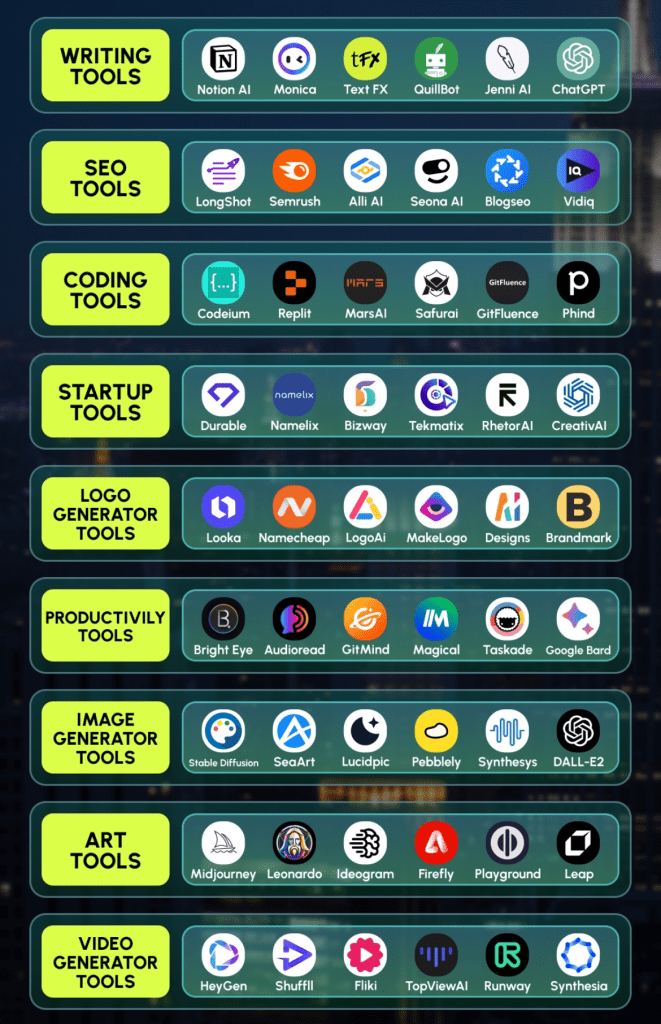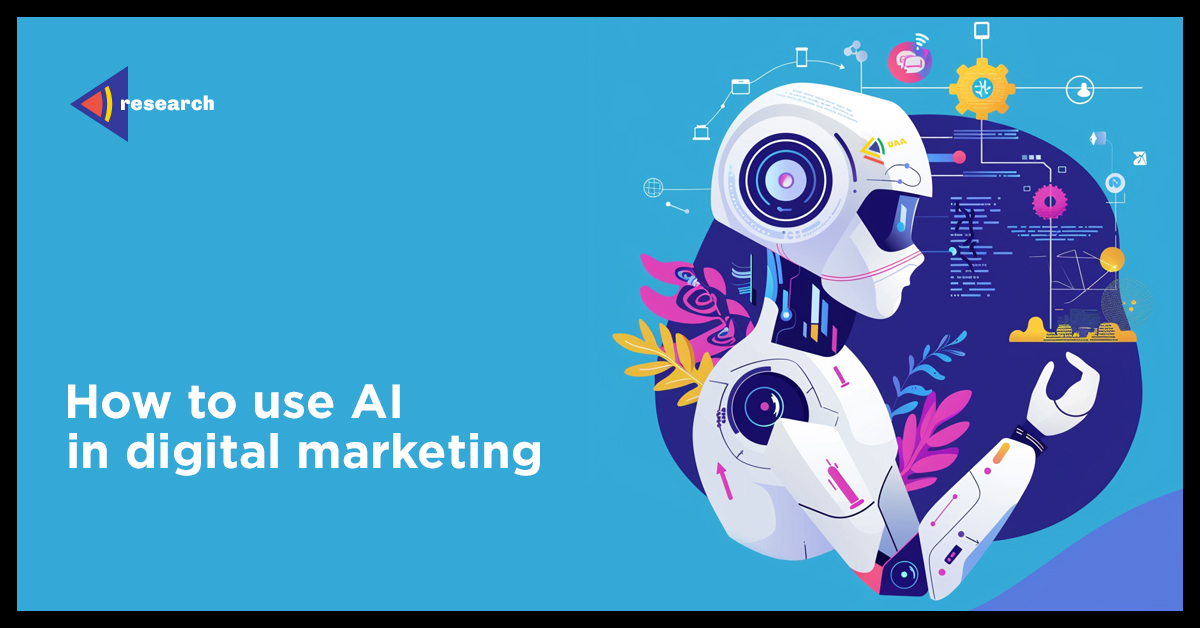AI in digital marketing: its role, advantages and disadvantages, and real-world applications
The utilization of artificial intelligence-based tools has experienced a surge in popularity in recent years. Increasingly, businesses, particularly small and medium-sized enterprises, are turning to these tools for the creation of marketing content.
In this article, we will delve into the landscape of AI services and programs tailored for generating graphic and video content. We will explore their benefits and drawbacks, as well as assess their efficacy. Additionally, we will examine several examples of how different brands have successfully employed these tools. Keep reading to discover how modern neural networks can elevate your marketing campaigns.

The role of AI in digital marketing today
Artificial intelligence holds a pivotal role in contemporary digital marketing, ushering in new possibilities with its speed and accessibility. AI facilitates the swift and automated generation of content for marketing campaigns, enabling the creation of banners for Google advertising campaigns or creatives for Facebook ads from the comfort of your own home.
Today, a plethora of services exist that allow for the creation of graphics and videos within minutes. This not only boosts the productivity of marketers but also enhances the effectiveness of their efforts.
In the following sections of this article, we will explore various services that can be effectively utilized for crafting graphics and videos. We’ll delve into their features, and pricing policies, and showcase examples of how different brands have successfully leveraged these tools. Continue reading to discover how you can revolutionize your marketing strategy with cutting-edge techniques.
The most popular AI services for creating graphic content
MidJourney
It’s rare to come across a marketer unfamiliar with this tool. It stands as one of the most renowned neural networks for generating graphic content, widely recognized and utilized across the globe. Launched in 2022, it sparked a significant revolution in the realm of graphic content creation for marketing endeavors.
This AI-powered tool excels in producing images based on text queries.
Pros:
- The service yields four image options per request, providing ample choices.
- Users can access additional variations of graphic materials on the same topic if desired.
- Customization options allow users to specify details and preferred image styles for optimal results.
- Further enhancements to generated images are possible with the aid of additional tips and instructions.
- Operates at high speed (though reduced image generation time is exclusive to paid subscriptions).
Cons:
- Lacks support for corporate branding.
- Integration with social networks is unavailable.
- Service functionality is limited to English.
- Quality of images depicting full-length people may occasionally fall short (e.g., incorrect number of fingers on hands).
Pricing:
- Free trial: 25 images
- Basic plan (3.3 hours of rapid graphic content generation per month): $10/month
- Standard package (15 hours): $30/month
- Professional tier (30 hours): $60/month
Designs.ai
DALL-E
This robust tool from OpenAI is a powerhouse for image creation and editing through artificial intelligence. Leveraging deep learning techniques, it crafts illustrations based on textual and visual inputs, ensuring top-notch content tailored to user preferences.
Pros:
- Precision in interpreting every word within prompts, thanks to advanced neural network algorithms, resulting in highly personalized outcomes.
- Ability to incorporate text onto images, such as inscriptions on clothing, albeit limited to the Latin alphabet for optimal performance.
- Enhanced generation of hand images, addressing a common issue encountered in other services.
- Seamless integration of multiple objects into a single image for a realistic composition.
- Respectful approach to copyright, refraining from generating images if prompts include the name of a living artist or photographer to avoid copyright infringement. Users retain copyright ownership of uniquely styled images.
- API compatibility for streamlined usage.
- Flexible pricing model offering packages of requests instead of monthly subscription plans, ideal for occasional AI usage by small businesses.
Cons:
- Inability to create vector graphics.
- Challenges in rendering Cyrillic text accurately on images.
- Occasional shortcomings in detail and naturalness of images, particularly in realistic styles.
Prices:
- Free plan includes 50 requests.
- 115 requests: $15.
Canva AI
Canva, a well-established graphic editor, has recently introduced its AI Image Generator and AI Video Generator. These tools create images and videos based on text queries.
Pros:
- Full functionality available in the free version of Canva.
- Swift performance.
- User-friendly interface, making it accessible even to novices unfamiliar with AI tools.
Cons:
- AI exclusively processes text queries; visual prompts are not supported.
- Images exhibit a lower level of detail and realism.
- Generating quality content may require multiple attempts due to a high error rate.
Prices:
- Free version.
- Pro plan with advanced features: $119.99 per year.
- Team plan: $300 per year for up to 5 users.
DeepBrain AI
Another option for producing text-based video content operates on a similar principle to its predecessor. Users upload text and select an “avatar” to narrate it in the video.
Pros:
- Realistic avatars are modeled after actual individuals.
- A selection of over 100 avatars to choose from.
- Support for 80 languages.
- Pre-designed templates for various content types.
- Enjoy a 20% discount with annual payment.
Cons:
- Video duration limitations (up to 10 minutes per video for the Starter plan, up to 20 minutes per video for the Pro plan).
- Subscription costs are relatively high.
- Pricing is based on the minutes of the generated video.
Prices:
- Free trial includes 1 video.
- Starter plan starts from $30 per month.
- Pro plan starts from $225 per month.
- Enterprise plan offers individualized pricing.
Pictory AI
InVideo
This versatile tool facilitates the creation of educational videos featuring talking “avatars,” as well as slideshows and clips, making it suitable for YouTube and social media content creation.
Pros:
- Built-in script generator powered by AI streamlines the video creation process.
- Over 5000 ready-made templates for various video types.
- Realistic voices narrate the videos.
- Comprehensive instructional videos on how to use the service, making it accessible even to beginners.
- Mobile compatibility for both Android and iOS devices.
Cons:
- Lack of direct video upload feature for YouTube or Facebook.
- Limited video editing capabilities compared to other platforms.
- Subscriptions are available only on an annual basis, without monthly payment options.
Prices:
- Free version includes watermarked videos.
- Business plan: $180 per year.
- Unlimited plan: $360 per year.
Examples of content created by brands using AI
- San Francisco Ballet used an image generated by the MidJourney neural network to illustrate a promotional post on social media. Instagram networks:

- The well-known alcoholic beverage brand Martini used 9 images created in MidJourney during the creation of a marketing video:
- The IT company in the field of cyber security Cyber Inc creates its video courses in various languages with the help of artificial intelligence Synthesia:
Advantages and Disadvantages of Utilizing AI for Small and Medium-Sized Businesses
Advantages:
- Optimization and Streamlining of Processes: AI can provide several design or video options within minutes, significantly reducing the time it takes for manual creation.
- Enhanced Creativity and Innovation: By automating routine tasks, AI allows marketers to focus on strategic planning and brainstorming for new ideas, fostering a more innovative marketing approach.
- Cost Reduction in Marketing Campaigns: Small businesses can avoid purchasing stock images or hiring freelance designers by leveraging AI. Medium-sized businesses can expedite the work of in-house designers, reducing the cost per material produced.
- Source of Inspiration: AI can assist designers in overcoming creative blocks by generating initial content and offering diverse ideas, which designers can then refine to meet brand requirements.
Disadvantages:
- Limited Consideration of Corporate Style: AI may not fully comprehend all aspects of a company’s corporate style, necessitating human intervention for complex tasks requiring high personalization.
- Learning Curve: Mastering AI tools for image creation requires time and effort. Alternatively, businesses may need to hire experienced designers proficient in AI tools to expedite the process.
- Inconsistent Quality: AI-generated content may not always meet expectations, especially for inexperienced users. Additionally, some images may lack realism compared to manually created content.
- Language Barrier: Many AI services have English interfaces, potentially posing challenges for non-English speakers and requiring the use of translation tools.
Best Suited Tasks for AI:
- Simple Routine and Monotonous Tasks: AI excels at handling repetitive tasks efficiently, freeing up human resources for more complex projects.
- Illustrations Without Complex Details: AI-generated illustrations are cost-effective alternatives to purchasing individual stock images, particularly for content not requiring intricate details.
Conclusions:
AI tools offer significant benefits for certain tasks, enabling faster and more cost-effective content creation. They empower businesses to allocate resources efficiently, allowing designers to focus on strategic initiatives and creative endeavors. While AI-generated content may not always match human quality, its speed and affordability make it a valuable asset for small and medium-sized businesses seeking to elevate their marketing efforts.


